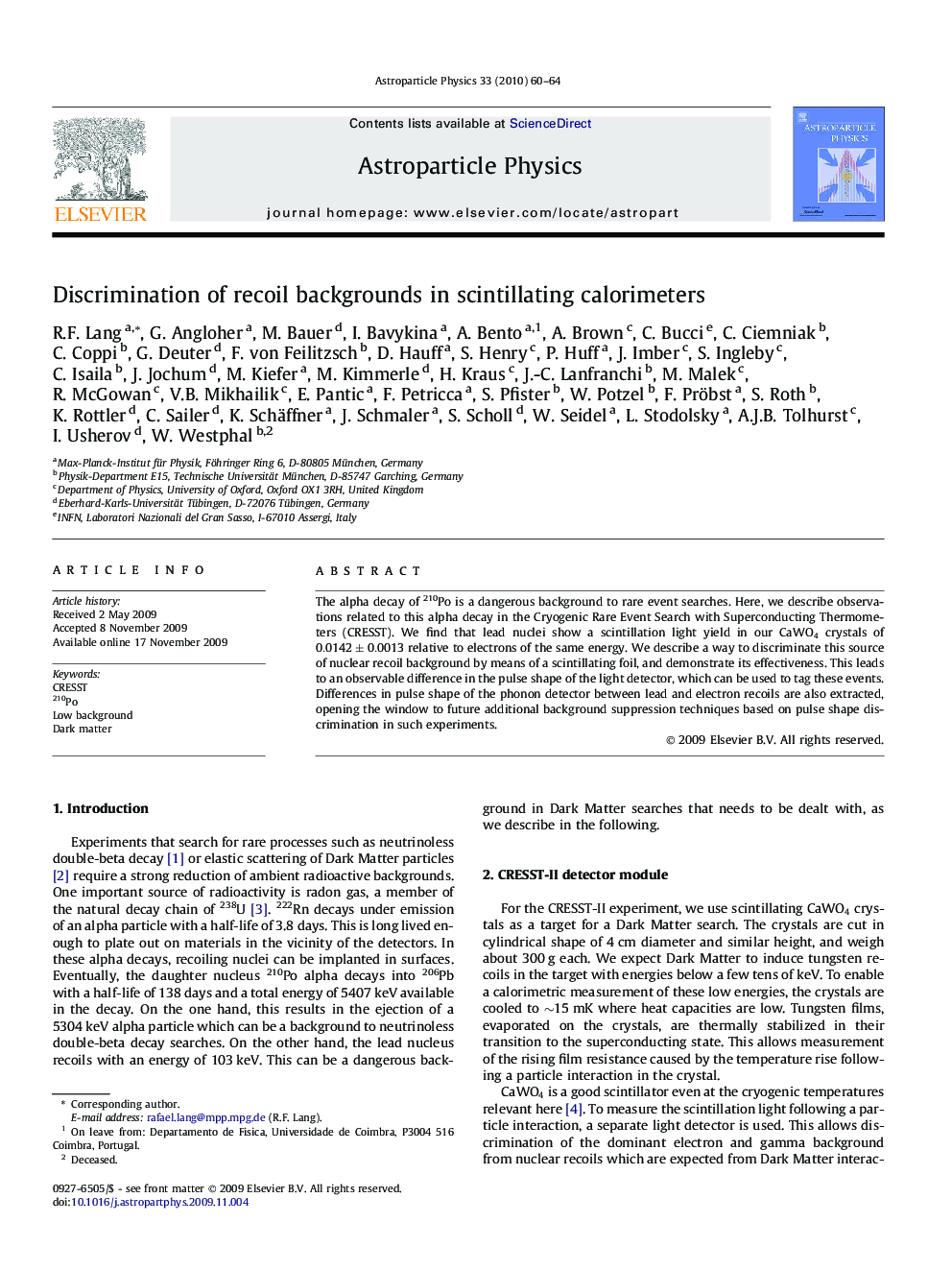| Article ID | Journal | Published Year | Pages | File Type |
|---|---|---|---|---|
| 1771173 | Astroparticle Physics | 2010 | 5 Pages |
The alpha decay of 210Po is a dangerous background to rare event searches. Here, we describe observations related to this alpha decay in the Cryogenic Rare Event Search with Superconducting Thermometers (CRESST). We find that lead nuclei show a scintillation light yield in our CaWO4CaWO4 crystals of 0.0142±0.00130.0142±0.0013 relative to electrons of the same energy. We describe a way to discriminate this source of nuclear recoil background by means of a scintillating foil, and demonstrate its effectiveness. This leads to an observable difference in the pulse shape of the light detector, which can be used to tag these events. Differences in pulse shape of the phonon detector between lead and electron recoils are also extracted, opening the window to future additional background suppression techniques based on pulse shape discrimination in such experiments.
